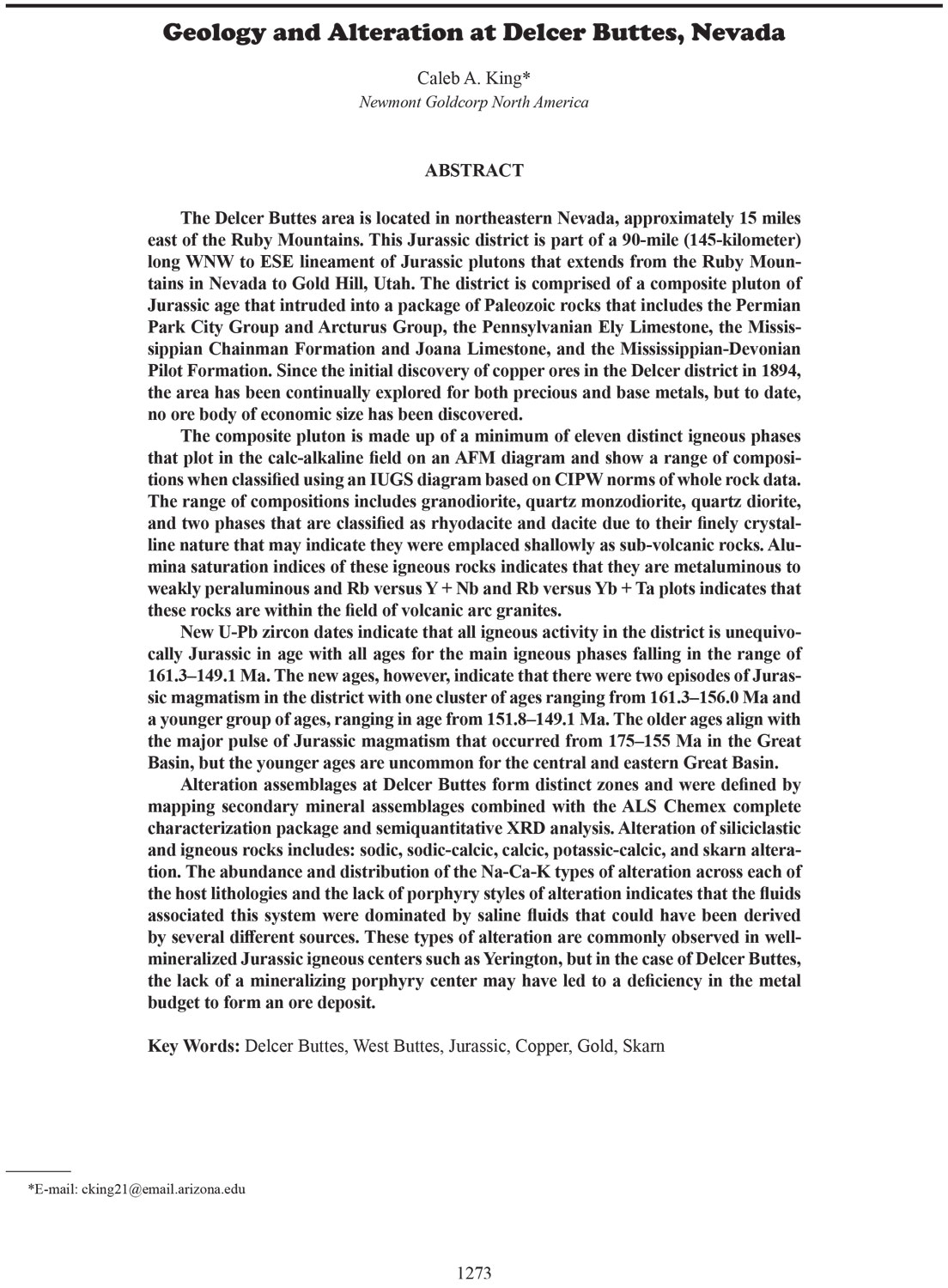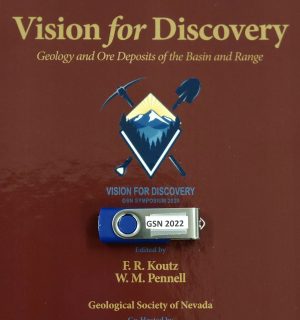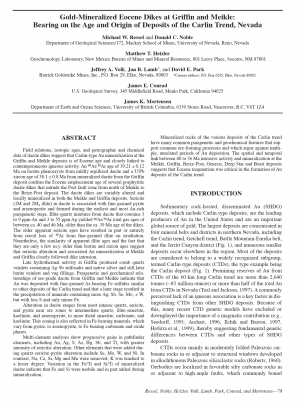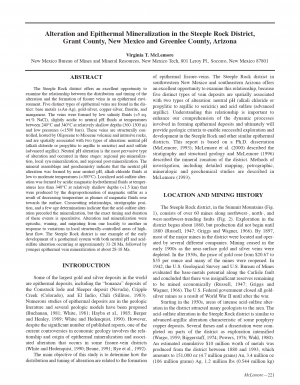Description
The Delcer Buttes area is located in northeastern Nevada, approximately 15 miles
east of the Ruby Mountains. This Jurassic district is part of a 90-mile (145-kilometer)
long WNW to ESE lineament of Jurassic plutons that extends from the Ruby Mountains in Nevada to Gold Hill, Utah. The district is comprised of a composite pluton of
Jurassic age that intruded into a package of Paleozoic rocks that includes the Permian
Park City Group and Arcturus Group, the Pennsylvanian Ely Limestone, the Mississippian Chainman Formation and Joana Limestone, and the Mississippian-Devonian
Pilot Formation. Since the initial discovery of copper ores in the Delcer district in 1894,
the area has been continually explored for both precious and base metals, but to date,
no ore body of economic size has been discovered.
The composite pluton is made up of a minimum of eleven distinct igneous phases
that plot in the calc-alkaline field on an AFM diagram and show a range of compositions when classified using an IUGS diagram based on CIPW norms of whole rock data.
The range of compositions includes granodiorite, quartz monzodiorite, quartz diorite,
and two phases that are classified as rhyodacite and dacite due to their finely crystalline nature that may indicate they were emplaced shallowly as sub-volcanic rocks. Alumina saturation indices of these igneous rocks indicates that they are metaluminous to
weakly peraluminous and Rb versus Y + Nb and Rb versus Yb + Ta plots indicates that
these rocks are within the field of volcanic arc granites.
New U-Pb zircon dates indicate that all igneous activity in the district is unequivocally Jurassic in age with all ages for the main igneous phases falling in the range of
161.3–149.1 Ma. The new ages, however, indicate that there were two episodes of Jurassic magmatism in the district with one cluster of ages ranging from 161.3–156.0 Ma and
a younger group of ages, ranging in age from 151.8–149.1 Ma. The older ages align with
the major pulse of Jurassic magmatism that occurred from 175–155 Ma in the Great
Basin, but the younger ages are uncommon for the central and eastern Great Basin.
Alteration assemblages at Delcer Buttes form distinct zones and were defined by
mapping secondary mineral assemblages combined with the ALS Chemex complete
characterization package and semiquantitative XRD analysis. Alteration of siliciclastic
and igneous rocks includes: sodic, sodic-calcic, calcic, potassic-calcic, and skarn alteration. The abundance and distribution of the Na-Ca-K types of alteration across each of
the host lithologies and the lack of porphyry styles of alteration indicates that the fluids
associated this system were dominated by saline fluids that could have been derived
by several different sources. These types of alteration are commonly observed in wellmineralized Jurassic igneous centers such as Yerington, but in the case of Delcer Buttes,
the lack of a mineralizing porphyry center may have led to a deficiency in the metal
budget to form an ore deposit.





